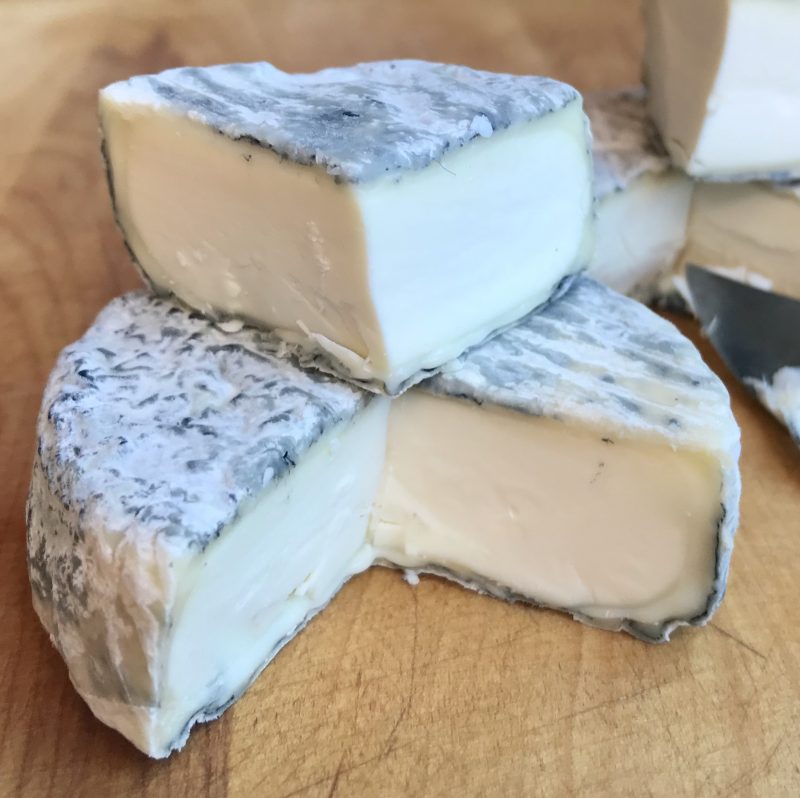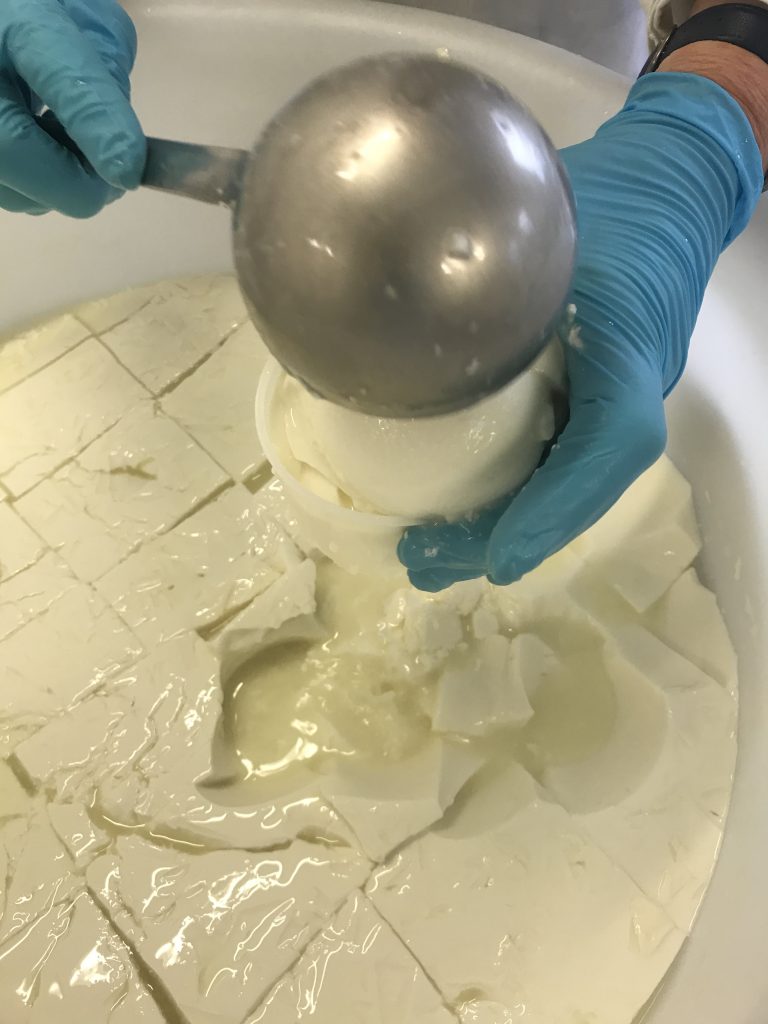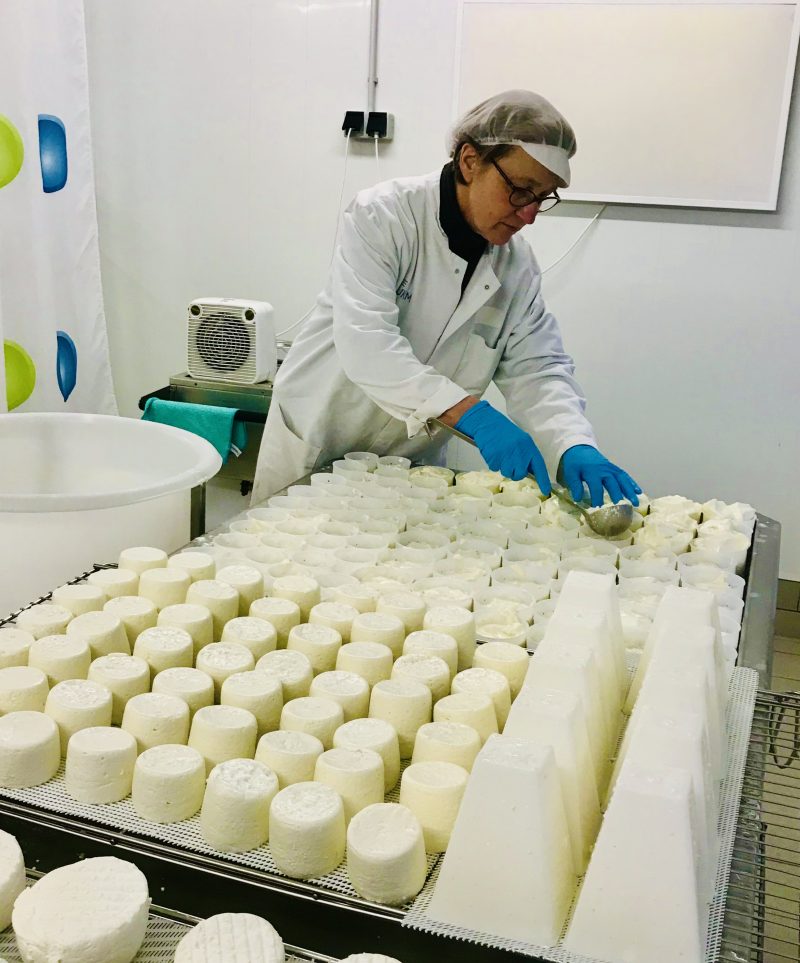This a monthly series which I have been publishing for years. You can subscribe here, to get the latest cheese delivered directly on to your screen.
„I’m so glad that with the cheese I finally found my life rhythm, and that is easily worth occasionally getting up in the middle of the night.“ This sentence has staid with me ever since I heard it from Sabine Jürß. There is so much in there. That you need structure to make it through life in a decent way. That it can take a while until you find the right structure. That it’s ok to go your own ways. Because getting up in the middle of the night also implies no or very little social life with regular 8 to 5/Monday through Friday people. Instead: sixty goats, a stall at the farmers market and French style cheese, like the Grisette, a small charcoal-coated lactic wheel.
It resembles the Loire classic Selles-sur-Cher-cher, but is smaller and obviously as different as the biodynamic farm’s pastures in Münster differ from those between Tours and Orléans. Most importantly, Sabine Jürß – in her early sixties, short grey blond hair, glasses, robust, lively and at ease with herself – has her very own ideas. As a matter of principle she milks the elegant brown and black „girls“ herself – „so that I know what’s going on“ – and she is willing to bow to the milk’s natural variations and its turning into cheese. Besides the Grisette she makes a whole bunch of other cheeses from the untreated, raw milk still warm from the udders. Since 2014 all of them are of the lactic type, that is set mainly with the help of lactic acid and just a tiny bit of rennet. Setting, ladling, draining, turning, demolding and salting take their time and the right moment: „From morning until evening, and between that the days, some good, some bad. The cheese leads the way.“
And you can taste that: the dry velvety, grey and white mottled rind evokes a quiet sharpness and recalls the umami-loaden clouds arising from a pan of dark meaty sauce bubbling away on the stove. The texture is dense and solid though melts on the tongue (if you have the necessary patience!) like a combination of halva and frozen parfait, again with a deep, quiet savouriness that is carried by an equally quiet, elegant acidity. Some lots tend to melt a little directly under the rind after a couple of weeks, others become dry and break into flakes when you cut them. Simply said: extremely good stuff.
Coming back to life’s rhythm and structure: Scellebelle is the name of a poor maid in the Flemish author Stijn Streuvels’s novel „The Flaxfield“, published in 1907. It features the landscape Jacques Brel extols in Le Plat Pays and the novel opens: „A heavy grey sky encumbered the world.“ – it is nature’s rhythm that dictates human life, with some being able to fall into its step and others fighting against it. Sabine Jürß had chanced across a film version of the novel, heard the name Scellebelle and been sure that one day, she’d do „something“ with it. Indeed. Thank you.
If you enjoyed reading this, you might consider clicking on the button below and supporting me in my work. I’d be more than happy and very grateful. Thank you.








